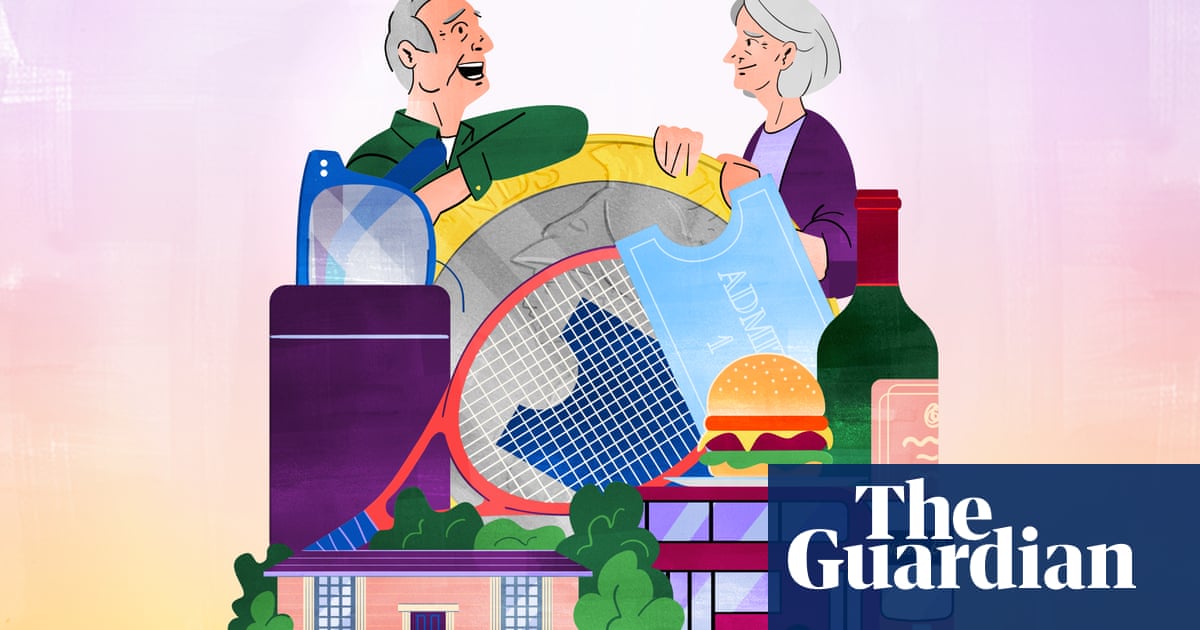
Icount myself lucky having a very small garden in London. It won’t win any horticultural prizes and “No Mow May” is the perfect excuse for benign neglect. But it has grass, the shade of an old apple tree and a water feature, and, in this heatwave, it’s a sanctuary. Most people have the same instincts, heading for shaded parks. In heat like this, we all want grass and trees.
But I keep getting leaflets urging me to destroy my leafy garden and to landscape it with artificial grass, allegedly “almost maintenance free”. They show “gardens” with emerald-green plastic “lawns” surrounded by austere plant-free fencing. These lifeless green carpets are set off with paving stones and have concrete “planters”, bleak designs sending a message: no living creatures tolerated here.
In my neighbourhood, this advertising has worked. Two decades ago, most London gardens would have shrubs and grass. Now the lethal shroud of plastic grass is everywhere, a coal- and oil-derived product, which can’t be easily recycled, replacing natural vegetation. Those who adopt it usually destroy front gardens too, ripping out hedges and tiling over the flower beds. Estate agents call these “stunning low-maintenance gardens” and treat them as performance indicators that the house has been “modernised”.
Imagine how grim those bright white slabs and plastic lawns are in this heatwave. Artificial lawns get hotter than bitumen and concrete. Without a blade of grass, and no shading vegetation, they are furnaces, emitting an unpleasant smell of melting plastic. For dog owners, there are particular perils, and not just the smell of dog urine. “Whoever has fake grass in their garden,” one hapless owner on the Isle of Wight wrote last week, “Don’t let your dogs on it, it’s just burnt my dog’s paws.”
Artificial “lawns” turn out to be high maintenance after all. They need to be watered to cool them down. They need special cleaning products to get rid of smells and stains. You even have to vacuum them to get rid of leaves.
It would be funny if there weren’t serious consequences. Trees and grass have cooling effects caused by shading and transpiration, when water within the tree is released as water vapour through their leaves. Hard surfaces, typical of “urbanised” areas, are much hotter than areas of natural vegetation. Destroying vegetation changes how the land absorbs and releases energy, contributing to temperature rises. Recent research found that “tree-covered areas in cities have a much lower land surface temperature compared with surrounding areas”.
Just as serious is the loss of biodiversity. With rampant development destroying the countryside, urban gardens are even more critical in providing a habitat for birds and insects. But now I’m surrounded by the concretisation of gardens, the outlook is bleak. This year, almost none of the regular garden birds have been to my garden. Blackbirds, tits, wrens have disappeared altogether, with only occasional visits from sparrows. The butterfly count is shockingly low too.
There’s plenty of public anger about this. The Twitter account Shitlawns, “showcasing the hideous trend of plastic lawns” has 30,000 followers. Newcastle city council has just agreed to “avoid” fake grass in landscaping. More boldly, Quebec prohibits plastic grass, and several German cities, including Nuremberg, have recently banned what they call “horror gardens”. Their plague involves gravel not plastic grass but the issues are the same. There is “no cooling effect in gravel gardens”, the council said, “the hard surfaces contribute to flooding risk”, and “horror gardens” are disastrous for biodiversity.
Last week, Sir James Bevan, chief executive of the Environment Agency, invoked Rachel Carson’s Silent Spring and warned of the catastrophe facing Britain’s wildlife.
The biodiversity crisis, he said, “poses just as great an existential risk to humanity as climate change”, and called for nature-based solutions to reverse shocking declines in wildlife.
As ever, there’s a gulf between these alarming reports and how most people just carry on with their ecocidal ways regardless. When so many people choose to annihilate all life in their own back gardens, it’s an uphill struggle to cajole them into nature-friendly behaviour. Challenging nonsensical greenwash misinformation like “artificial lawns are good for the environment because it means fewer petrol-driven mowers” would be a start. But regulation is required. There’s nothing good to say about artificial grass. The rubber granules are toxic, it’s hard to recycle, it destroys biodiversity and you can’t even sit in the garden when it’s hot.
In the meantime, from my deckchair, under my apple tree, I’ll try to block out the sound of my neighbours vacuuming their plastic carpets.












